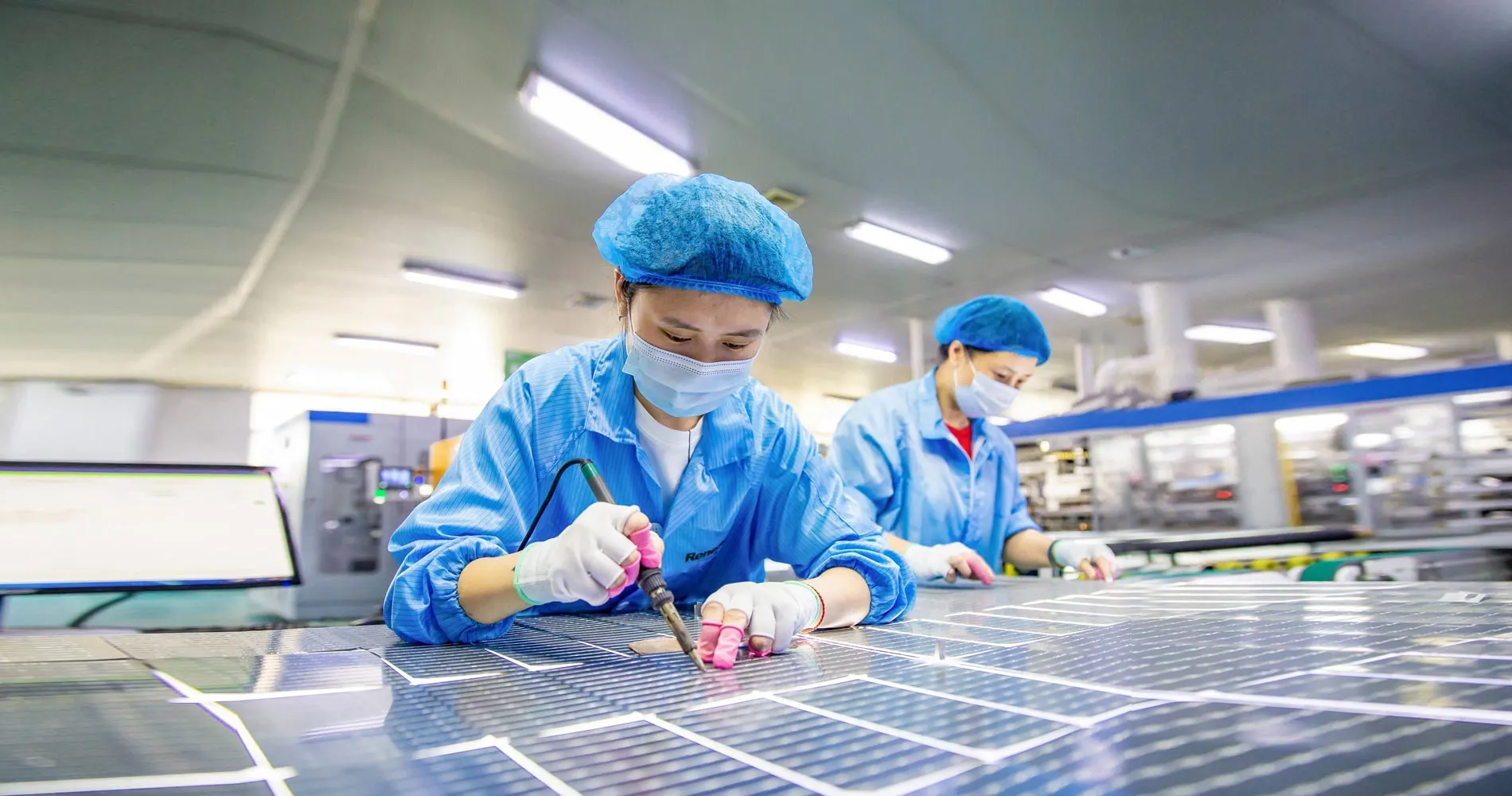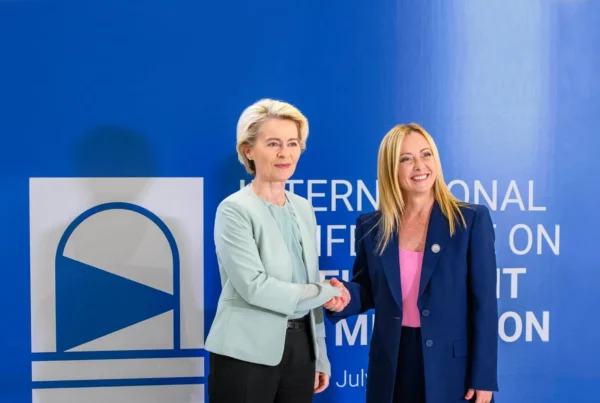China has successfully positioned itself as the leading producer of technology for renewable energy. It is flooding the world market with its cheap products, leaving American and European producers far behind. More and more domestic industries are now calling for protectionism and governmental incentives to both promote the local economy and to avoid becoming overly dependent on the Asian giant.
Alexandra Dubsky
19 March 2024
Chinese version
In 1928 Herbert Hoover promised the American public „a chicken in every pot and a car in every garage“ during his 1928 presidential campaign. His iconic slogan helped win the presidential election. Today China wants their PVs “on every garage”. PV stands for photovoltaic.
Over the past few decades, it was the Asian superpower China that has emerged as the world’s leading player in both the production and sale of solar energy technologies. This trend happened thanks to China’s substantial investments in research, development, and manufacturing.
China’s dominance in the solar industry is not a recent phenomenon however, it is the result of strategic planning and relentless investment. Since the start of the century the Chinese government declared its aims to become a global leader in renewable energy. The commitment was evident in the form of government policies, financial incentives and aggressive expansion strategies. It launched specific initiatives to encourage technological advancements and market expansion.
Additionally, China’s solar industry benefits from economies of scale which are unmatched by any other country. Thanks to its large local market China can both produce solar panels and components at great quantities at very low prices, as well as export these products at similar low-price levels.
China aims to increase significantly its installed solar power capacity. By 2022, it had already surpassed its previous target of 105 GW and set new goals. Upon completion of all approved projects the Asian giant’s total wind and solar capacity will stand at 1.37 TW, topping the government’s goal of 1.2 TW for 2030.
Europe’s energy goal is to be CO2-free by 2050. The energy transition should not only provide the continent with C02-free energy, but also free it from expensive imports.
Europe is thus determined to end its dependence on Russian gas and diversify its energy sector. But it is problematic whether it can avoid other dependencies, such as on China’s PV systems or US-LNG.
Although China has flooded the market with cheap products as part of its government policy, Europe could offer products that meet its ecological standards. These products may not necessarily be the cheapest, but they are better suited to the overall European energy systems and requirements and should be subsidized accordingly.
The more the region transitions from fossil fuels to renewables, the more a new possible dependency becomes clear. The US, which is keen to increase its LNG market share, is already in the process of putting an economic protective barrier in place to prevent cheap Asian products from flooding its domestic market. Europe must now follow suit, in order to ensure diversified energy sources and thus a more stable energy security through enhanced energy independence.
The European Commission said it was “aware of the difficulties faced by EU manufacturers” and “is in regular contact with the renewable energy manufacturing industry … to better understand the market situation and discuss possible options to address the current situation.”
Jenny Chase, a senior analyst at Bloomberg NEF, which provides information on global commodity markets and technologies driving the transition to a lower-carbon economy, attributed plummeting prices to Chinese mass production that is met with less demand of the Euro zone due to growing interest rates and delays related to permits.
“A whole lot of [European] solar manufacturers are going to go bust … in the next couple of years,” she said, adding: “EU manufacturers have higher costs so it’s very, very likely that some of them will suffer.”
Europe in general and Austria in particular have developed “good, innovative products” such as solar inverters, said Hubert Fechner, Chairman of the Austrian Photovoltaic Technology Platform. However, to further develop and achieve commercial viability, Europe`s solar industry needs more “strong signals” from the private sector, asserts Fechner, who goes on to emphasize that “We must now move quickly to implement an independent European energy industry. Europe will now have to catch up with the US.”
Burgenland is a European pioneer in the field of renewable energies and covers 150% of its own electricity requirements exclusively from renewable energies. The extra power can be transformed into green hydrogen and can be stored and turned back into power when needed. To achieve the province’s goal of climate neutrality by 2030, Burgenland Energie (BE) is massively expanding photovoltaics and wind power.
BE CEO Stephan Sharma is aware of the problem of dependence on Chinese products, noting: “An incredible amount has been invested here by the Chinese government with the aim of world market leadership,” he said. BE has therefore formed a joint venture with the German energy storage manufacturer Cmblu Energy to develop an environmentally friendly, non-lithium-based energy storage system on a purely organic basis.
The question of whether Europe will react quickly enough with such initiatives and not slip into the next phase of dependency remains to be seen.







